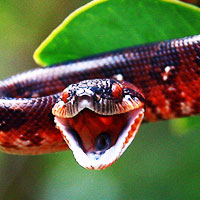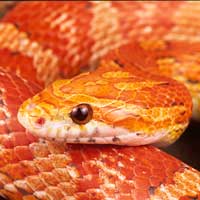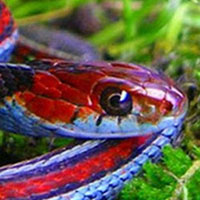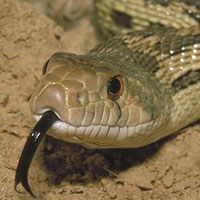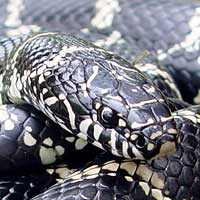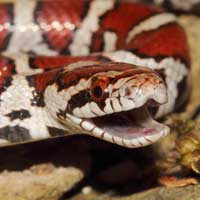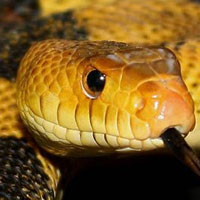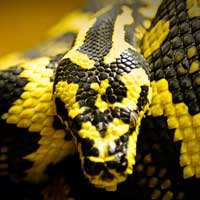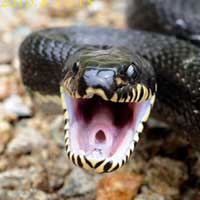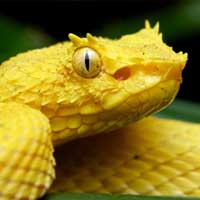Dive Into the Fascinating World of the Centralian Python
The scientific name of the Centralian Python is Morelia bredli, and it belongs to the Pythonidae family, which comprises non-venomous constricting snakes commonly referred to as pythons.
Scientific Name: Morelia bredli
Snake Family: Pythonidae
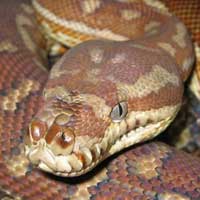
Introduction to the Centralian Python
The Centralian Python (Morelia bredli), also known as the Bredl's Python, is a stunning non-venomous snake native to Central Australia. Renowned for its vibrant orange-red coloration and manageable temperament, this python is a favorite among reptile enthusiasts. Its adaptability and striking appearance make it an excellent choice for experienced keepers. This guide will cover all aspects of the Centralian Python, including its natural habitat, diet, behavior, and care requirements.
The Unique Habitat of the Centralian Python
The Centralian Python is endemic to the arid and semi-arid regions of Central Australia, thriving in environments with extreme temperature variations.
- Geographic Range: Found primarily in the MacDonnell Ranges of Central Australia.
- Preferred Habitat: Rocky outcrops, woodlands, and open savannas.
- Climate: Hot and dry during the day, with cooler temperatures at night.
| Region | Habitat Type | Key Features |
|---|---|---|
| MacDonnell Ranges | Rocky Outcrops | Shelter in crevices, stable temperatures |
| Central Australia | Woodlands | Scattered trees, open spaces |
Diet and Feeding Habits of the Centralian Python
The Centralian Python is a carnivorous predator, feeding primarily on small mammals and birds in its natural habitat. In captivity, its dietary needs are straightforward and easy to manage.
- Natural Diet: Rodents, small birds, and occasionally reptiles.
- Feeding Frequency:
- Juveniles: Every 5-7 days for rapid growth.
- Adults: Every 10-14 days, depending on size and activity level.
- Captive Feeding Tips:
- Offer thawed, pre-killed rodents for safety and convenience.
- Ensure prey size matches the widest part of the snake’s body.
- Feed in a separate enclosure to prevent substrate ingestion.
Behavior and Temperament of the Centralian Python
The Centralian Python is known for its calm demeanor and adaptability, making it a popular choice among snake keepers. Understanding its behavior is key to successful care.
- Activity Patterns: Primarily nocturnal but may bask during the day.
- Defensive Behavior: Rarely aggressive but may hiss or strike if threatened.
- Interaction with Humans: Tolerates handling well when accustomed to regular interaction.
With proper handling and care, the Centralian Python can become a docile and rewarding pet for experienced keepers.
Health and Lifespan of the Centralian Python
The Centralian Python has a lifespan of 20-30 years in captivity with proper care. Maintaining optimal health requires attention to its environmental needs and diet.
- Common Health Issues:
- Respiratory infections caused by improper humidity or temperature.
- Skin shedding problems (dysecdysis) due to low humidity.
- Obesity from overfeeding in captivity.
- Preventive Measures:
- Maintain a temperature gradient with a basking spot of 88°F-92°F.
- Ensure humidity levels between 40-60%.
- Provide regular veterinary check-ups and a clean enclosure.
Reproduction and Breeding of the Centralian Python
The Centralian Python is oviparous, laying eggs after mating during the cooler months. Breeding in captivity can be achieved with careful planning and environmental control.
- Mating Season: Late winter to early spring.
- Clutch Size: 10-20 eggs per clutch.
- Incubation Period: 60-70 days at 86°F-88°F.
- Breeding Tips:
- Simulate seasonal temperature changes to encourage breeding behavior.
- Provide a nesting box with moist substrate for egg-laying.
- Monitor incubation conditions closely to ensure healthy hatchlings.
Handling and Caring for a Centralian Python
Handling and caring for a Centralian Python requires patience and consistency to ensure its wellbeing and docility.
- Enclosure Requirements:
- Minimum size: 4’ x 2’ x 2’ for adults.
- Include secure hides, climbing structures, and a water dish for soaking.
- Maintain proper lighting and temperature gradients.
- Handling Tips:
- Support the snake’s body fully during handling.
- Avoid handling during shedding or immediately after feeding.
- Limit handling sessions to reduce stress, especially for juveniles.
With proper care, the Centralian Python can thrive in captivity, offering years of enjoyment and fascination for its keeper.
Other Snakes In This Species
 Amethystine Python
Amethystine Python Ball Python
Ball Python Black-Headed Python
Black-Headed Python Boelens Python
Boelens Python Borneo Blood Python
Borneo Blood Python Burmese Python
Burmese Python Burrowing Python
Burrowing Python Centralian Python
Centralian Python Childrens Python
Childrens Python Coastal Carpet Python
Coastal Carpet Python Diamond Python
Diamond Python Green Tree Python
Green Tree Python Indian Python
Indian Python Inland Carpet Python
Inland Carpet Python Jungle Carpet Python
Jungle Carpet Python Macklots Python
Macklots Python Malaysian Blood Python
Malaysian Blood Python Olive Python
Olive Python Pygmy Python
Pygmy Python Reticulated Python
Reticulated Python Ringed Python
Ringed Python Rock Python
Rock Python Rough Scaled Python
Rough Scaled Python Spotted Python
Spotted Python Sumatran Blood Python
Sumatran Blood Python Timor Python
Timor Python White Lipped Python
White Lipped Python
